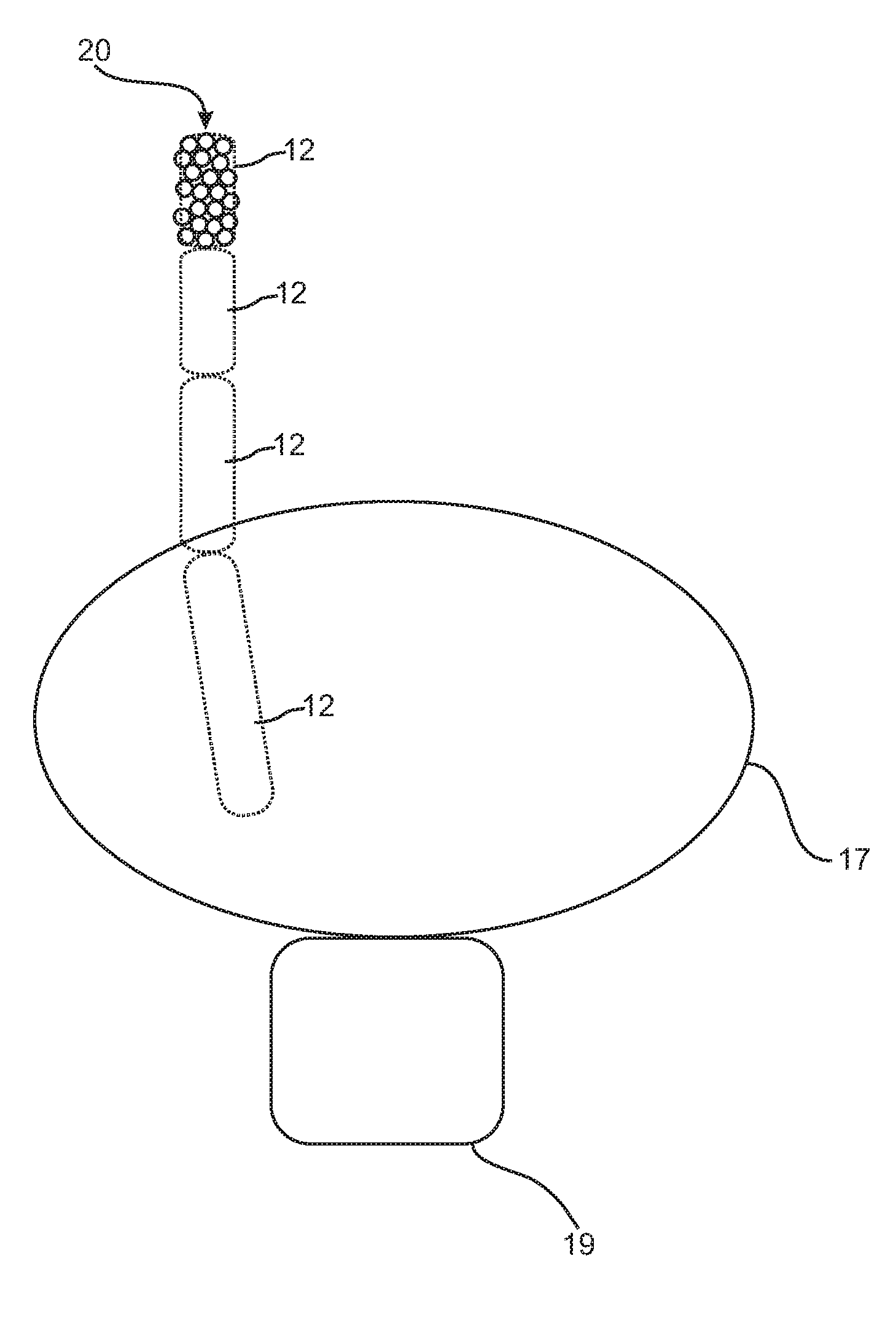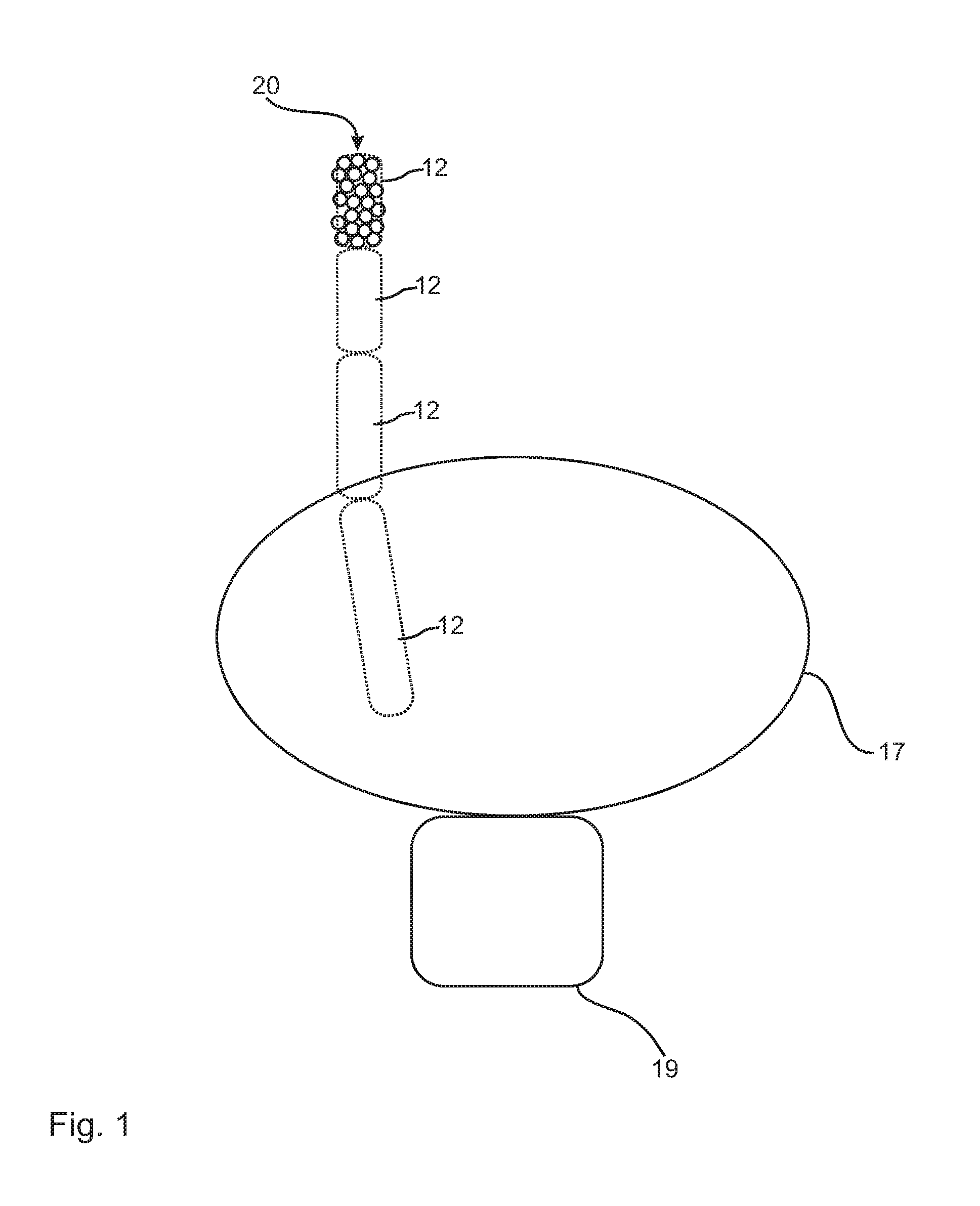Method for recognizing gestures of a human body
a human body and gesture recognition technology, applied in the field of human gesture recognition, can solve the problems of inability to achieve, require an immense amount of calculations, and require a relative high amount of calculations for each method, and achieve the effect of cost-effective and simple manner
- Summary
- Abstract
- Description
- Claims
- Application Information
AI Technical Summary
Benefits of technology
Problems solved by technology
Method used
Image
Examples
Embodiment Construction
[0059]The transmission of information from a recognition device 100 into a limb model 30 is shown generally on the basis of FIGS. 1 through 4. Thus, the entire procedure starts with the recording of a human body 10, here the hand 16, by a depth camera device 110, and it leads to a point cloud 20. The point cloud 20 is shown in FIG. 1 only for the outermost distal finger joint as a limb 12 for clarity's sake. The recognition of all limbs 12 and preferably also of the corresponding back of the hand 17 from the point cloud 20 takes place in the same manner. The result is a recognition in the point cloud 20, as it is shown in FIG. 2. Thus, the entire hand 16 with all fingers 18 including the thumb 18a is located there. These have the respective finger phalanges as limbs 12.
[0060]The individual joint points 14 can then be set for a method according to the present invention. These correlate with the respective actual joint between two limbs 12. The distance between two adjacent joint poin...
PUM
 Login to View More
Login to View More Abstract
Description
Claims
Application Information
 Login to View More
Login to View More - R&D
- Intellectual Property
- Life Sciences
- Materials
- Tech Scout
- Unparalleled Data Quality
- Higher Quality Content
- 60% Fewer Hallucinations
Browse by: Latest US Patents, China's latest patents, Technical Efficacy Thesaurus, Application Domain, Technology Topic, Popular Technical Reports.
© 2025 PatSnap. All rights reserved.Legal|Privacy policy|Modern Slavery Act Transparency Statement|Sitemap|About US| Contact US: help@patsnap.com



